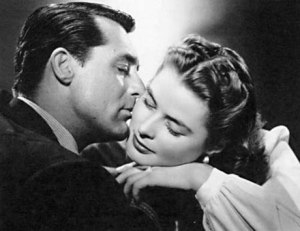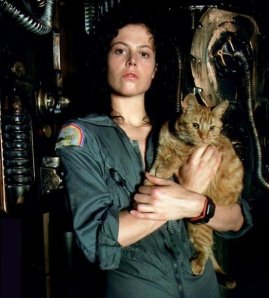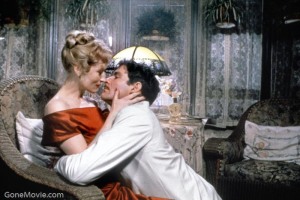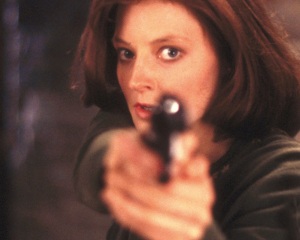‘You’ve Come A Long Way, Baby. Or Have You?’ – Women In Hollywood
Sometime in the early 1970s, actress Shirley MacLaine appeared on TV giant Michael Parkinson’s iconic BBC interview show ‘Parkinson’, and was asked by Parkie about the dearth of quality roles for women in Hollywood (yes, even back then). Shirley opined that in the classical Hollywood era, because sex and nudity were off-limits – even married couples were shown to have twin beds instead of a single – writers were forced to pen interesting roles for women which would have much more on offer for actresses than just displaying their physical charms, and would carry a film on equal footing with their male counterparts. The sub-genre of the ‘women’s picture’ was also thus created. And so you had the greats playing lawyers and judges and doctors, or even the most fatale of femmes, but all of them had something in common: flawless writing and brilliant characterisation, giving the audience a gaggle of superbly etched characters, one more compelling than the next, with nary a cookie-cutter in sight. On the other hand, said Shirley, after the lifting of the censor code at the end of the 60s, all those great parts dried up because female characters were now kept busy stripping off and screwing in the bedroom!
The debate about women in film is an on-going one, though few would argue that the ‘second sex’ is often given second-class citizen treatment in the parts-of-quality stakes. And certainly, in Hollywood, age is not just a number when it comes to women, but inextricably linked to how much box-office clout (or lack thereof) they are perceived to possess – which is close to zilch. The same does not hold true for men- how else do you explain 62-year old Harrison Ford getting to play Indiana Jones yet again?
But let’s leave aside the unpleasantness for the time being and focus instead on the good part(s). What are some of the great characters created for women in Hollywood over the past eight decades or so?
1930’s
The decade that saw the imposition of the Hays’ Production Code, spelling out just what could and could not be depicted onscreen, also gave us some remarkable female characters that have long since entered the collective consciousness as indelible icons, not least of whom has to be of course Scarlett O’Hara (Vivien Leigh, Gone With The Wind – 1939), that ultimate Southern jezebel. Ellie Andrews (Claudette Colbert, It Happened One Night – 1934), the spoiled heiress, hitched a ride by raising her skirt and showing off her shapely gams (“the limb is mightier than the thumb!”) and nabbed Clark Gable in the bargain. Irene Bullock (Carole Lombard, My Man Godfrey – 1936) was the giddiest of the giddy screwball comedy dames, as was Susan Vance (Katharine Hepburn, Bringing Up Baby – 1938), another motor-mouthed heiress with a penchant for repressed paleontologists. Dorothy Gale (Judy Garland, The Wizard of Oz – 1939) voiced the universal wish to find happiness in her own backyard (“Somewhere over the rainbow…”), while her nemesis, The Wicked Witch of the West (Margaret Hamilton) plagued our nightmares (“I’ll get you my pretty, and your little dog too!”).
1940’s
The War came, and so did some eminently memorable wartime heroines (and anti-heroines). The most luminous of those would have to be Ilsa Laszlo (Ingrid Bergman, Casablanca – 1942), who melted the heart of tough guy Rick Blaine (Humphrey Bogart) – twice (“Here’s looking at you, kid”). Maria Tura (Carole Lombard, To Be Or Not To Be – 1942), impossibly beautiful, with brains and wit to match, charmed her way out of the clutches of the Gestapo, taking along with her her attractive admirer – and her husband. Alicia Huberman (Bergman, Notorious – 1946) put her life on the line for love of country – or was it love of T. R. Devlin (Cary Grant)? Sexy ‘Slim’ (Lauren Bacall, To Have and Have Not– 1944) taught ‘Steve’ (Bogart) how to whistle (“you just put your lips together, and blow”), while wily Phyllis Dietrichson (Barbara Stanwyck, Double Indemnity – 1944) made a sucker out of an insurance salesman by seducing him into killing her husband. Mrs. Danvers (Judith Anderson, Rebecca – 1940) played a game of cat and mouse with the new Mrs. De Winter (Joan Fontaine), both women haunted in their own ways by the titular heroine.
1950’s
The Eisenhower era saw a happy mix of sassy broads and sweet Mary-Janes, with Lisa Carol Freemont (Grace Kelly, Rear Window – 1954) somewhere in the middle as a woman more than smart enough to know when to let a man believe (mistakenly) that she’s frivolous, even as she plays Watson to his somewhat indisposed Holmes. Dorothy Shaw (Jane Russell, Gentlemen Prefer Blondes – 1953) was the loyal-to-the-end best friend to not-so-dumb blonde Lorelei Lee (Marilyn Monroe), who, once and for all, lobbed one for the much-maligned golddigger (“Don’t you know that a man being rich is like a girl being pretty? You wouldn’t marry a girl just because she’s pretty, but my goodness, doesn’t it help?”). Julie Gillis (Debbie Reynolds, The Tender Trap – 1955), smart whip in naïve gamine’s clothing, tamed confirmed lothario Frank Sinatra, and shrill 20’s movie star Lina Lamont (Jean Hagen, Singin’ In The Rain – 1952) gave insufferable divas everywhere someone to look up to (“I make more money than Calvin Coolidge! Put together!”). Sweet, simple, and smoking hot Sugar Kane Kowalczyck (Monroe, Some Like It Hot – 1959) always seemed to get the fuzzy end of the lollipop in life, until she got in touch with the feminine side of a saxophone player on the lam from the mob, even if his motor took a while to get going (“It’s not how long it takes, it’s who’s taking you”).
1960’s
As the sexual revolution and Vietnam got underway, women in the movies too, took a turn for dark-hued ambiguity. Still brightly lit (and lighting up dark cinema houses everywhere) was the magical, messed up sprite Holly Golightly (Audrey Hepburn, Breakfast at Tiffany’s – 1961), Truman Capote’s elfin party girl becoming every man’s ideal companion for a kiss in pouring Manhattan rain. Mrs. Robinson (Anne Bancroft, The Graduate – 1967) was another kind of fantasy altogether, the kind that involves older women, leopard-print bras, and awkward fumblings in by-the-hour hotel rooms (“I am not trying to seduce you!… Would you like me to seduce you? Is that what you’re trying to tell me?). Miss Giddens (Deborah Kerr, The Innocents – 1961) was a Victorian governess whose own repressed desires sent her tumbling over the edge, while Alma Brown (Patricia Neal, Hud – 1963), salty housekeeper to sex-on-legs Texas womanizer Hud Bannon (a scorching Paul Newman) pretty much told her randy employer that she would’ve happily had a roll in the hay with him if he hadn’t attempted to molest her (“I done my time with one cold-blooded bastard; I’m not lookin’ for another”). Both Bonnie Parker (Faye Dunaway, Bonnie and Clyde – 1967) and Marion Crane (Janet Leigh, Psycho – 1960) met violent ends, but not before seducing the audience with their combination of bravado and vulnerability.
1970’s
Arguably the zenith of American filmmaking, the Me-decade also gave filmgoers at least a handful of unforgettable movie women, beginning with the divinely decadent Fraulein Sally Bowles (Liza Minnelli, Cabaret – 1972), the all-singing, all-dancing child-woman captivating Berliners at the hedonistic Kit Kat Club. Lili Von Shtupp (Madeline Kahn, Blazing Saddles – 1974) was another enchanting chanteuse, albeit one with an endearing (and hilarious) speech impediment (“A wed wose! How womantic!”). Princess Leia Organa (Carrie Fisher, Star Wars – 1977) gave rise to feverish fan-boy fantasies involving Swiss- roll hairdos, and Annie Hall (Diane Keaton, Annie Hall – 1977) la-di-da-ed her way into baby boomer hearts and also gave birth to boho-chic with her wardrobe of baggy, masculine suits and ties. Nurse Ratched (Louise Fletcher, One Flew Over The Cuckoo’s Nest – 1975) gave health-care workers a bad name with her evil iciness, but Sandy Olsen (Olivia Newton-John, Grease – 1978) brought the sunshine back with her anachronistic wholesomeness, at least until the moment she turned into ‘bad Sandy’ in sprayed-on lycra pants and home-perm that brought Danny Zuko (John Travolta) to his knees and gave him chills that multiplied. But the decade’s best (and perhaps also of all time) was surely Ellen Ripley (Sigourney Weaver, Alien – 1979) the spaceship Nostromo’s only human survivor who fought off the snarling monster of the title, and also, more importantly, smashed through the gender barrier in action movies, by making her sex irrelevant. Ripley was neither babe nor butch, but simply the tough guy to beat all tough guys.
1980’s
If the 70s were the zenith, then the 80s were almost certainly the nadir when it came to parts for women in la-la-land, with more ‘the girl’ roles going around than anything else. Still, there was Sophie Zawistowska (Meryl Streep, Sophie’s Choice – 1982), the Holocaust survivor whose beauteous smile belied a secret so calamitous, it destroyed the lives it touched. There was also Aurora Greenway (Shirley MacLaine, Terms of Endearment – 1983)), the neurotic matriarch at loggerheads with her rebellious daughter, until cancer entered the fray (“It’s past ten. My daughter is in pain. I don’t understand why she has to have this pain. All she has to do is hold out until ten, and IT’S PAST TEN! My daughter is in pain, can’t you understand that! GIVE MY DAUGHTER THE SHOT!”). On the other end of the spectrum was Jessica Rabbit (voiced by Kathleen Turner, Who Framed Roger Rabbit? – 1988), an hour-glass-figured, bow-lipped broad so luscious, men didn’t seem to care two hoots she was a cartoon (“I’m not bad. I’m just drawn that way”).
1990’s
Despite the odds that were stacked up against them in the decade previous, women actually saw their lot improve by leaps and bounds in the 90s, with one Mr. Ridley Scott especially praiseworthy for giving us the iconic figures of Thelma and Louise (Geena Davis and Susan Sarandon, Thelma & Louise – 1991), two ordinary mid-west women who end having one heck of an extraordinary, life-changing road-trip. Also pretty darned extraordinary was FBI agent Clarice Starling (Jodie Foster, Silence Of The Lambs – 1991), a rookie who beats the experts at their game, and proves her ultimate credentials by not being turned into the main course by Hannibal ‘The Cannibal’ Lecter (Anthony Hopkins) to go with his fava beans and nice chianti. Mad-as-a-hatter Annie Wilkes (Kathy Bates, Misery – 1990) was the No.1 Fan from hell to her captive favourite writer (James Caan) and was liable to go off her rocker without the slightest provocation (“He didn’t get out of the COCKADOODIE CAR!”). Somewhat less unhinged but still likely to bust your hump was Tracy Flick (Reese Witherspoon, Election – 1999), the psychotically enervated high-schooler who put the ‘i’ in ‘over-achiever’. Wei Lin (Michelle Yeoh, Tomorrow Never Dies – 1997), a martial arts dynamo, was a worthy partner for James Bond, and Sheriff Marge Gunderson (Frances McDormand, Fargo – 1996) got on with business, morning sickness and third-trimester belly and all. Oda Mae Brown (Whoopi Goldberg, Ghost – 1990) was a fraud psychic until she actually started hearing the voice of a slain Patrick Swayze, while Mrs. Mia Wallace (Uma Thurman, Pulp Fiction – 1994) got down with Vincent Vega (John Travolta) at the Jack Rabbit Slims Twist Contest, and appreciated the virtue of comfortable silences (“Why do we feel it’s necessary to yak about bullshit in order to be comfortable?… That’s when you know you’ve found somebody special. When you can just shut the fuck up for a minute and comfortably enjoy the silence”).
The 2000s so far have seen their share of juicy women characters, from Beatrix Kiddo a.k.a The Bride (Uma Thurman, Kill Bill – 2003), to Clementine Kruczynski (Kate Winslet, Eternal Sunshine of the Spotless Mind – 2004), from Dory the forgetful fish (voiced by Ellen Degeneres, Finding Nemo – 2003), to footballer Jasminder ‘Jess’ Bhamra (Parminder Nagra, Bend It Like Beckham – 2002). But how will this decade fare as compared to previous ones in about fifty years or so? Only time will tell. In the meantime, in the words of Anna Christie (Greta Garbo, Anna Christie – 1930) “Gif me a visky, ginger ale on the side, and don’ be stingy, baby.”









Leave a comment